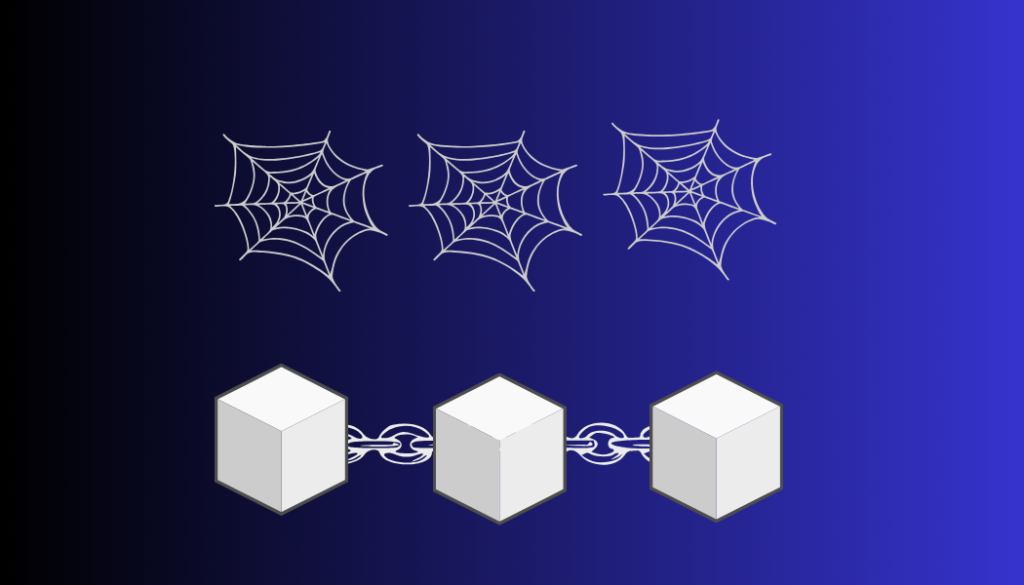Let’s dive into the intriguing world of Web3! We’re all familiar with the Internet – it’s been evolving since its inception in 1989. From the basic HTML of Web 1.0 to the interactive communities of Web 2.0, we’ve seen significant progress. Then came Web 3.0, also known as the semantic web, which revolutionized things even further. It integrated AI and IoT to enhance connectivity and understanding. But there was still a crucial missing piece.

The Rise of Web3: Beyond Walled Gardens
Enter Web3! Unlike its predecessors, Web3 doesn’t play by the same rules. It’s not confined within walled gardens controlled by service providers. Instead, it utilizes Blockchain technology to decentralize data and content, empowering users like never before. With Blockchain, information isn’t owned by any single entity but is collectively hosted on peer-to-peer networks. This decentralization is what makes the new web truly revolutionary.
Key Differences Between Web2 and Web3
Let’s break it down:
| Web2 | Web3 | |
|---|---|---|
| Ownership | Centralized | Distributed, democratic |
| Tech | Apps (iOS, Android, Facebook, etc.) | Blockchain |
| Data | Within walled gardens | Peer-to-peer networks |
Applications of Web3
It isn’t just a concept – it’s already shaping our digital landscape. Here are some exciting examples:
Bitcoin
The poster child of Web3, Bitcoin disrupted traditional finance by introducing a decentralized currency. Its success paved the way for a multitude of cryptocurrencies, challenging the conventional notions of monetary control.
Non-Fungible Tokens (NFTs)
NFTs are another fascinating aspect of Web3, offering unique ownership of digital assets. From digital artwork to virtual real estate, NFTs have opened up new avenues for creators and collectors alike.
Decentralized Apps (dApps)
Developers are leveraging Blockchain to create dApps, decentralized alternatives to traditional services. These platforms prioritize user ownership and censorship resistance, providing a breath of fresh air in the digital ecosystem.
Smart Contracts
Smart contracts automate agreements without the need for intermediaries, streamlining transactions and reducing costs. Ethereum, a leading Blockchain platform, is at the forefront of this innovation.
Decentralized Autonomous Organizations (DAOs)
DAOs are reshaping organizational structures by enabling decentralized governance through token voting. Without traditional hierarchies, stakeholders have a direct say in decision-making processes.
Pros and Cons of Web3
As with any groundbreaking technology, the new web comes with its own set of advantages and challenges:
Advantages
- Ownership of Personal Information: Users retain control over their data, enhancing privacy and autonomy.
- No Middlemen: Smart contracts facilitate direct transactions, reducing reliance on intermediaries.
- Censorship Resistance: Content on Web3 platforms is immune to censorship, fostering freedom of expression.
Disadvantages
- Lack of Regulation: The decentralized nature of Web3 can facilitate the spread of misinformation.
- High Energy Consumption: Blockchain operations consume significant resources, raising concerns about sustainability.
- Potential for Criminal Activity: The anonymity of cryptocurrencies can be exploited for illicit purposes.
FAQs
What is the difference between Blockchain and Web3?
While related, Blockchain is the underlying technology that powers Web3. It encompasses a broader ecosystem of decentralized applications and protocols built on Blockchain.
Is Web3 open source?
Yes, Web3 is built on open-source principles, ensuring transparency and accessibility. However, it goes beyond traditional open-source projects by decentralizing data and governance.
How does Web3 affect Bitcoin and other cryptocurrencies?
It provides the infrastructure for cryptocurrencies like Bitcoin to thrive. It enables secure, peer-to-peer transactions without the need for intermediaries or central authorities.
Can Web3 be regulated?
Regulating its presents unique challenges due to its decentralized nature. While some advocate for regulatory frameworks to address potential risks, others argue for a hands-off approach to preserve innovation and autonomy.
How can I get involved in the Web3 ecosystem?
Getting involved in it is easier than you might think! Here are a few steps you can take:
- Educate Yourself: Start by learning more about Blockchain technology and its applications. There are plenty of online resources, forums, and communities dedicated to the new web.
- Explore Projects: Dive into decentralized applications (dApps), cryptocurrencies, and other Web3 initiatives. Experiment with different platforms and see what resonates with you.
- Join Communities: Connect with like-minded individuals in Web3 communities and forums. Engage in discussions, ask questions, and share your insights and experiences.
- Contribute: Whether it’s through coding, content creation, or advocacy, find ways to contribute to the Web3 ecosystem. Your skills and expertise can make a meaningful impact.
- Stay Informed: the new web is a rapidly evolving space, so stay up-to-date with the latest developments and trends. Follow thought leaders, attend conferences, and subscribe to newsletters to stay informed.
By immersing yourself in the world of Web3, you’ll not only gain valuable insights but also become an active participant in shaping the future of the internet.
Download new PD proxy version
To download the latest version of PD Proxy, you can visit the official website of ForestVPN, a reliable provider of VPN services. ForestVPN ensures secure and anonymous browsing, protecting your online privacy and data. Simply navigate to ForestVPN and explore their range of VPN solutions, including the latest version of PD Proxy. Stay safe and enjoy seamless internet access with ForestVPN!


